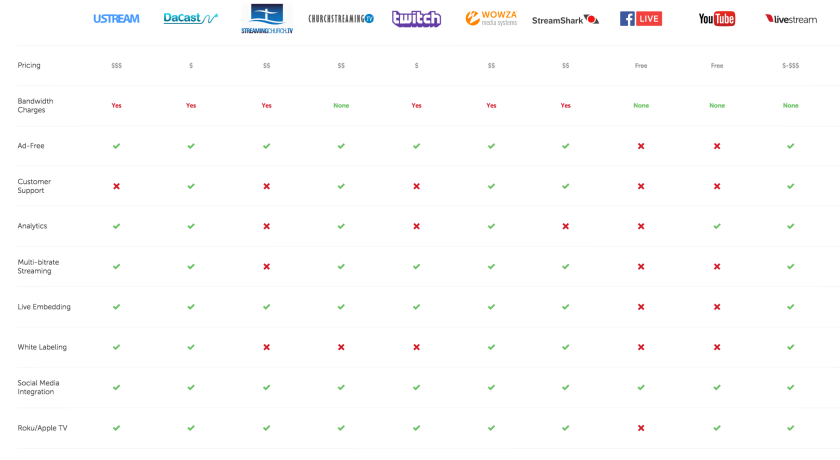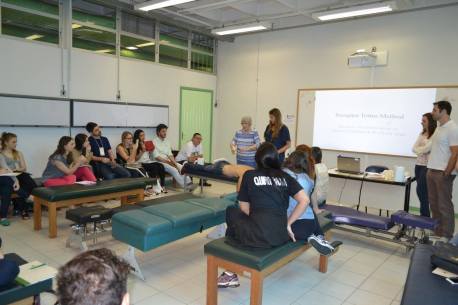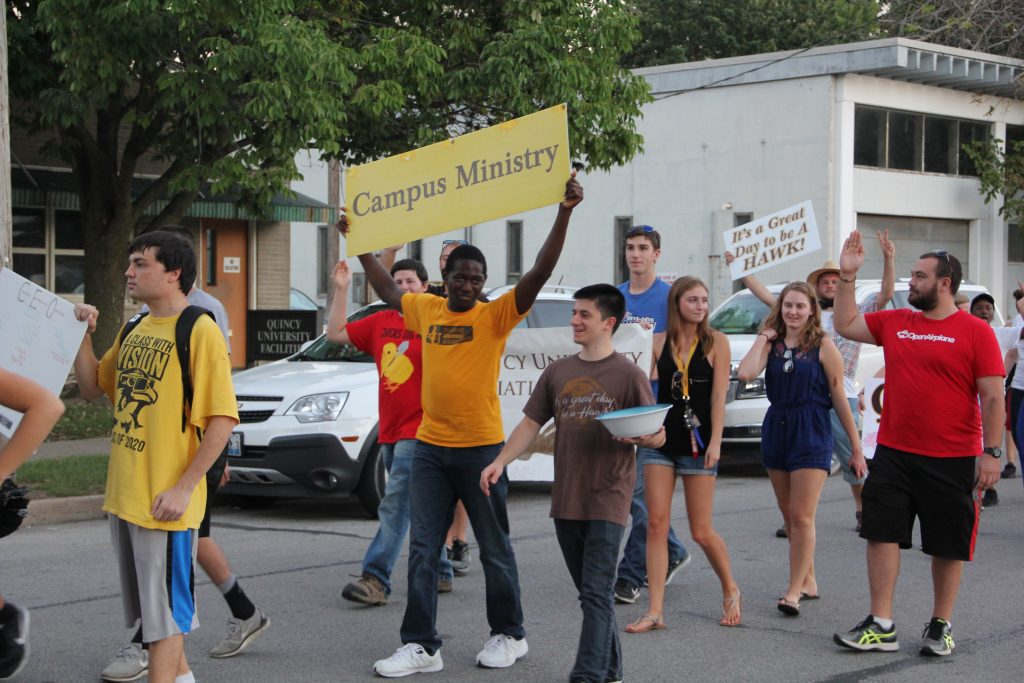Today, the current representation of the Franciscan order on QU campus is two, Fr. John Doctor, OFM, Vice-President of Ministry and Mission and Brother Terry Santiapillai, OFM, who serves the campus at Brenner Library. Why has the presence of the Franciscans on campus declined?
For over one hundred years since the establishment of St. Francis Solanus College in 1860 there has been a large Franciscan presence on campus. There were 30 to 40 Franciscans on campus during the later half of the twentieth century. Since that time the number of Franciscan brothers and fathers has diminished greatly to one-fourth the population in the province since 1960.
According to Fr. Tom Nairn, Provincial for the Province of the Sacred Heart. The reason for this can not be found in one simple answer. It involves many factors that have affected the Franciscan culture on campus to this day.
“Quincy University suffered from the same fate as many of the ministries of the Province of the Sacred Heart,” Nairn said.
The lack of vocation in young adults to join the ministry. The changes that took place during Vatican II. Religious orders overall dropped in numbers. As the Franciscan province got smaller, Franciscans were taken out of their educational ministries and were needed to perform parish work. Those Franciscans still left in the order were also advanced in age, most over 70. Finally, most who enter the order today are older and there is less desire to complete the necessary training and education that is required to become a professor.
During the 60s and 70s, there was a decline of young men and women willing to make the sacrifices needed to become priests, brothers or nuns, primarily the vow of celibacy. The refusal by the hierarchy of the Catholic Church to change this commitment impacted their numbers greatly. There were also changes taking place in society for those who felt a calling to serve in other ways.
Fr. John Ostdiek, OFM, was present on campus during these developing times. He acknowledges these changes taking place during and following the Kennedy administration. 
“The switch started for people with President John F. Kennedy, he was instrumental in promoting the Peace Corps and other service organizations. There were opportunities to serve other than vocation for lay people,” Ostdiek said.
Fr. Joe Zimmerman, OFM arrived on campus in 1963. There were approximately 32 friars at that time on campus. He also witnessed these changes taking place.

“Vocation is happening more outside the Franciscan Friar order, but what I think Fr. John Doctor is trying to do is keep the Franciscan heritage alive on campus. Also keeping the Franciscan spirit alive are lay people like Ray Heilmann, who still connects to the students,” Zimmerman said.
Vatican II ushered in a number of changes in the order. Removal of Latin as the spoken word in Mass, lay people were encouraged to participate in the service and new possibilities granted for music and singing, and women allowed into upfront roles as readers, lectors, and Eucharistic ministers.
“Prior to the Vatican Council, for someone to feel that they were active in the Catholic Church, many needed to be a priest, brother, or sister. That is not the case anymore,” Nairn said.
Many Franciscans believed the Catholic Church to be headed in the wrong direction by including so many others who were not fully committed to the church by taking vows of poverty, chastity, and obedience.
“A lot of personal reaction to the changing situation came from the Franciscan community. Some were in disagreement with these decisions and decided to leave the order,” Ostdiek said.
Fr. Joe believes Vatican II aroused deeper feelings in Franciscan men. Most of the Franciscans were in eighth grade when they left for the seminary and psycho-sexually speaking were not fully mature.
“Vatican II said marital state was not inferior to clerical state, it’s a vocation, it’s a calling. That made a lot of Franciscan men think about it,” Zimmerman said.
Religious orders in general in this country have dropped in numbers, not just on this campus. According to Pew Research Center, the number of U.S. adults and youth who do not identify with any organized religion is growing. There are many who have religious interfaith marriages and choose not to follow one doctrine over another. Another factor according to the research is the millennial generation’s decline in affiliation with any Christian organization. Fewer than six-in-ten Millennials identify with any branch of Christianity.
With the decline in numbers of Franciscans, many were called to leave educational institutions to perform parish work. Many friars felt the attractiveness of doing parish work.
“Many Franciscans didn’t consider teaching priestly work, they wanted to perform weddings and funerals. College didn’t offer much of that. Franciscans were offered choices by their provincial, but many didn’t get to choose their path, it was ultimately decided by the provincial based upon need in the community,” Zimmerman said
In the 60s there were at least 25 friars teaching on campus, but as the college grew there was a need for more teachers to serve. The overall declining population of Franciscans, with even fewer desiring a higher level of education prompted the school to turn to lay teachers to fill the void.
Because many of the men who enter the Franciscan order today are much older, the average age is around 50, there is less desire for them to complete all the credentialing requirements needed to teach at college.
“In the 30s and 40s, you didn’t need a degree to teach, once you had spent four years in the seminary and were ordained you could teach. Central accreditation for schools didn’t take place until 1952 and only a few had masters or doctoral degrees then. Today there are more factors involved. First, you have to get your degree. Second, once you get your degree there is no guarantee you can get a job. Third, you can’t just walk in and take a job away from a lay person, why go through all the hassle,” Zimmerman said.
There isn’t just one reason for the diminished presence of Franciscan Friars on campus at Quincy University, but several combined. In many ways, it is the history of the Catholic Church, an aging population of friars, and the lack of vocation felt by many over the past several decades that is the cause. The only real possible way for this to change is more Franciscan vocations.
Fr. Ted Bracco, OFM spent many years teaching on campus and believes it is the work by the friars that built the school and perhaps the time has come for others to take their place.
“Maybe we’ve done what God intended us to do and it’s time to move on,” Bracco said.















 “Her example of being a great wife, wonderful mom, and a fantastic doctor made me want to pursue the chiropractic profession. She led by example, I knew I could do the same,” Franklin said.
“Her example of being a great wife, wonderful mom, and a fantastic doctor made me want to pursue the chiropractic profession. She led by example, I knew I could do the same,” Franklin said. “My mom had a great influence on my decision to become a chiropractor. I am sure I would never have even considered becoming a chiropractor if I had not grown up with my mother being a chiropractor.
“My mom had a great influence on my decision to become a chiropractor. I am sure I would never have even considered becoming a chiropractor if I had not grown up with my mother being a chiropractor.
 , Zach Hesterberg. He is the CEO of
, Zach Hesterberg. He is the CEO of 




